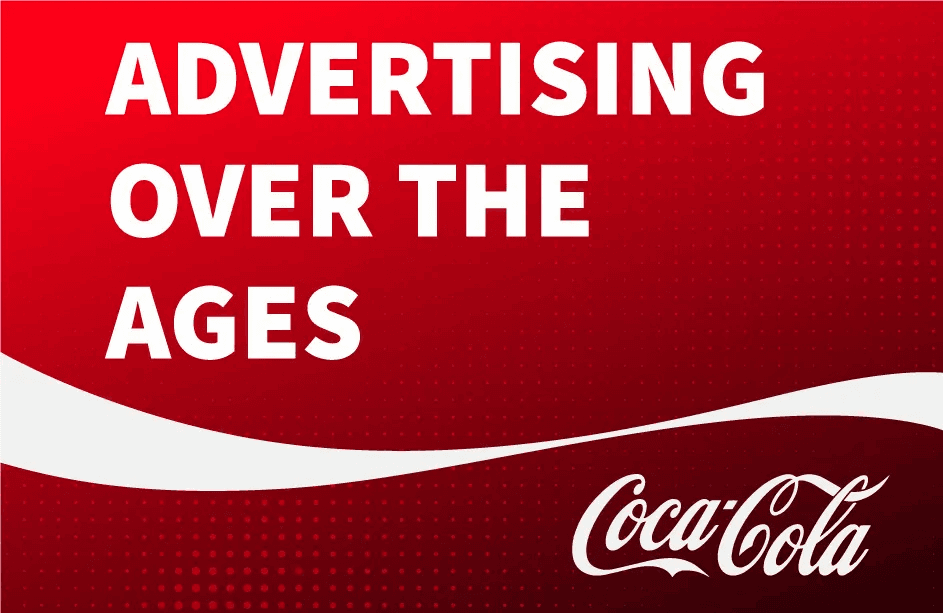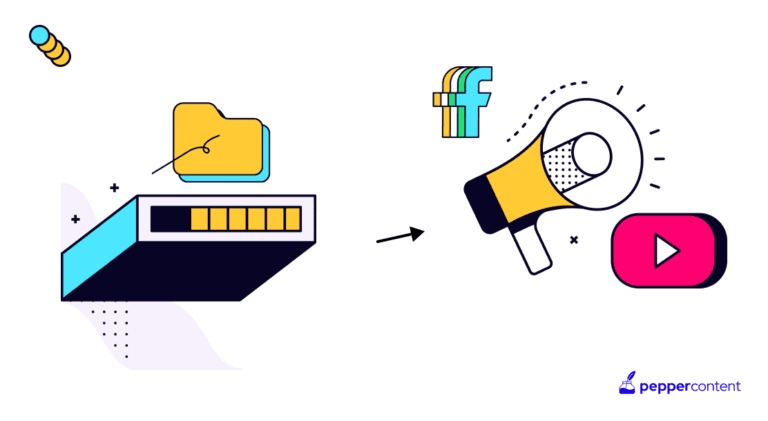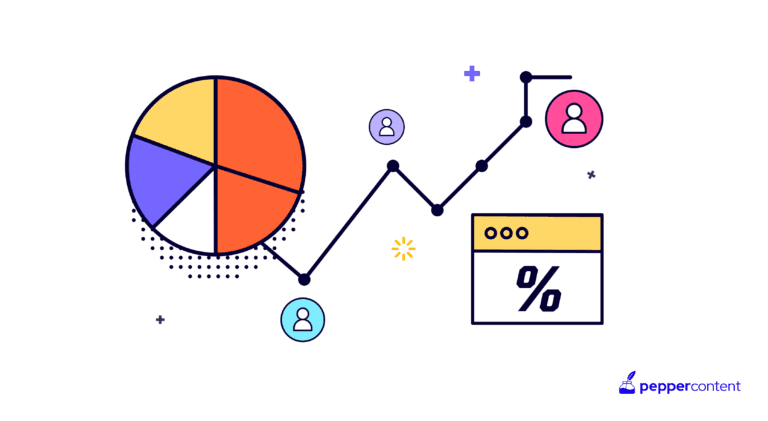Advertising through the Ages: Coca-Cola’s Content Marketing Strategy

Table of Contents
- The Current Content Marketing Strategy
- History of Coca-Cola’s Content Marketing Strategy
- Key Takeaways
- Conclusion
- FAQs
The primary aim of all marketers is to understand the consumer in great detail. Today, we often assume advertising means television ads, YouTube ads, Facebook ads, and more. However, advertising has been around for ages, much before the Internet and even before television existed. Even then, top brands competed to create the best value for their consumer. Coca-Cola is a particularly apt example of all the brands that have become a part of our life.
First manufactured in 1886 in Atlanta, USA, it has become an integral part of social gatherings, parties, and homes. Studying the fascinating journey of one of the world’s most beloved brands can help understand the trends and changes in its advertising strategy better today.
But, before going back in time, let’s look at Coca-Cola’s current marketing strategy.
The Current Marketing Strategy
Coca-Cola’s current marketing strategy works on three pillars.
1. Liquid and linked
The brand’s content is liquid – it doesn’t necessarily fit into just one box. Given the nature of the drink, the demographic for it varies. So, it must flow like liquid and adapt to various geographies and demographics. But, at the same time, it must remain linked to the core brand tone and voice. It must never waver from this. The underlying business goal must be met at all times.
2. 70-20-10 content plan
70% of the content created by the brand is low-risk – less controversial, less risky, and takes less time. It’s the content that brings in the moolah. 20% of the content is more innovative. It takes time and connects with a more focused target audience. This is the audience that buys your products and services. The final 10% is the riskiest content—the stuff that people dream of doing but are too cautious about doing so. But this will show you what you are made of. This 10%, according to Coca-Cola, is also the crux for the future 70% and 20%.
3. Content excellence
Finally comes content excellence. Every brand – and we are sure Coca-Cola, too – goes through several iterations of an idea before it even meets the final drawing board. If your content is not excellent, it should not be published. It is as simple as that.
Now, let’s look at how Coca-Cola’s content marketing strategy has evolved over the years while keeping these three aspects firmly in mind.
Coca-Cola’s Content Marketing Strategies Over the Years
1. The early 1900s

In 1906, American society was transitioning from one that preferred alcoholic beverages to other alternatives, and Coca-Cola made its mark here with the slogan “The Great National Temperance Beverage.” Since alcohol was increasingly associated with instability and chaos, the word “temperance” automatically created a positive connotation with Coke.
2. The 1940s

Post this, Coke ads focused on the product’s quality and popularity for some years. By the 1940s, Coca-Cola realized that its product went beyond its functional benefits and served a broader purpose as well—an accompaniment while socializing with friends and family. This was when they came up with newer taglines such as “Serving Coke Serves Hospitality.”
3. The 1970s

The Hilltop Ad in the 1970s showed a group of racially and ethnically diverse young people singing about wanting to buy the World a Coke. Today, such an ad might not seem very powerful; in fact, it might even be considered insensitive by some. However, the ad struck a chord with the consumers in the 1970s as they felt it perfectly captured the decade’s essence.
By that time, Coke was fast rising in popularity in different countries, and this ad established them as a global brand all across the world in one stroke. The copy is simple but conveys the feelings of hope, harmony, and togetherness very succinctly, all of which are part of Coke’s motto.
4. Coca-Cola in India
When Coke first launched in India in 1956, it targeted the youth with its message of a fun drink to accompany good times with friends. In 1977, it sponsored the tri-nation Cricket Cup, which India won. It then came to be known as the Coca-Cola cup.
Fun, friendship, and excitement
Focusing on the younger demographic, Coke targeted friendship, fun, and excitement. It brought on board popular actors to deliver this message. Its iconic campaign that came soon after its launch had the line Jo chahe ho jaaye, Coca Cola enjoy. It shows best friends who bicker and fight over college elections, bonding later over a bottle of Coke.
A refreshing drink
In earlier decades, places to hang out with friends and significant others mainly were outdoors, such as beaches, parks, and lakesides. Combined with India’s hot climate, the appeal of Coca-Cola as a refreshingly cool and fun drink was very well suited for the Indian market. In India, people were already habituated with asking for thanda, by which they referred to a cool drink. It could refer to any soft drink or juice. Coca-Cola adeptly utilized the opportunity with a catchy slogan, Thanda matlab Coca-Cola, and associated its brand with this definition, thus reminding all Indians about its refreshing nature.
Happiness in a drink
In recent years, Coke realized that it had become too huge a brand to play along with only one connotation such as that of friendship, fun, refreshment, or more. It expanded to its campaign of “Open Happiness.”
The aim here was to say yes to happiness when you open a Coke bottle. These ads showed people from different towns and cities bonding over a Coke. Such a tagline brings immense positivity to an already existing brand.
The last decade
One of the recent breakthrough campaigns by Coca-Cola in the last decade was the Share a Coke campaign. It was first launched in 2011 in Australia. The brand printed the top 150 popular names on millions of their bottles in the country. This encourages people to buy bottles with their own names or their friends’ and family’s names on them. The brand asked them to tweet about the same with the hashtag #ShareACoke. The campaign was replicated in various ways across the globe. In Israel, billboards greeted customers with their names. In China, nicknames were printed on the bottles instead of first names.

Key Takeaways
- Advertising has been around for ages, much before the Internet and even before television existed. Even then, top brands competed to create the best value for their consumer.
- Adapting to the geographical location and trends of the era is an essential aspect of a good content marketing strategy.
- Coca-Cola’s content marketing strategy considers its demographics carefully and builds it around the target audience’s likes and dislikes.
- Ensure that your content is always adaptable to its target audience and geographies while being true to your brand voice.
- Create a combination of low-risk, innovative, and high-risk content to continue creating and eliminate creative fatigue.

Conclusion
Coke truly captures a large number of events, occasions, and moments of which it is a part- from birthday parties and winning cricket matches to high school reunions and, sometimes, at crucial moments of life as well. Coke beautifully captured all of it with the one word common to them – happiness.
It is fascinating to see how the brand has evolved with the times over the last century.
FAQs
– Make a content calendar.
– Figure out your KPIs
– Know your audience
– Understand how to distribute your content
– Decide on the type of content
According to Magic Hoth, Coca-Cola applies the 70-20-10 investment principle to creating liquid content for its customers. 70% is low-risk content that is easy to execute and only takes up 50% of your time. 20% focuses on innovations that work. 10% includes high-risk ideas.
The Share-a-Coke campaign by Coca-Cola in 2021 encouraged customers to find and buy bottles with names (of people) of their friends and families. They were then supposed to tweet about their experiences using the hashtag #ShareaCoke. The entire campaign was based on the concept of personalization that hit the ball out of the park.
The first parameter to change your marketing strategy is if it was implemented two years ago. Business, marketing, consumer demands all change rapidly within months. So, first, check whether your goals are the same as your strategy and whether they both meet your customers’ demands.
– Brand positioning
– Owned media value proposition
– Business case
– Strategic plan
Latest Blogs
In this blog, explore the golden rules of using AI marketing tools so you can leverage the benefits to their maximum potential.
In this blog, you’ll learn how to avoid the pitfalls of SEO over-optimization while enhancing your site’s performance.
In this article, we’ll take a look at what AMP is, its advantages and disadvantages, and how it affects SEO.
Get your hands on the latest news!
Similar Posts

Content Marketing
8 mins read
The Ultimate Round-Up of Content Marketing Tips from 2023

Content Marketing
6 mins read
Content Marketing in the Age of Big Data: Leveraging Data for Competitive Advantage

Content Marketing
6 mins read